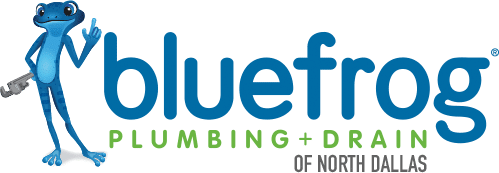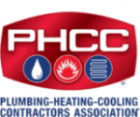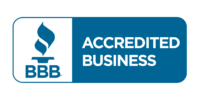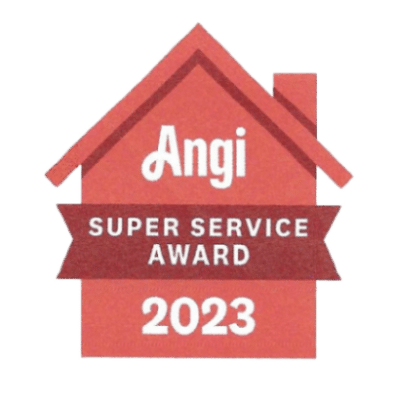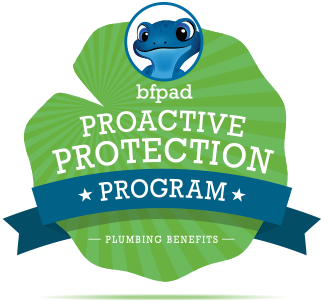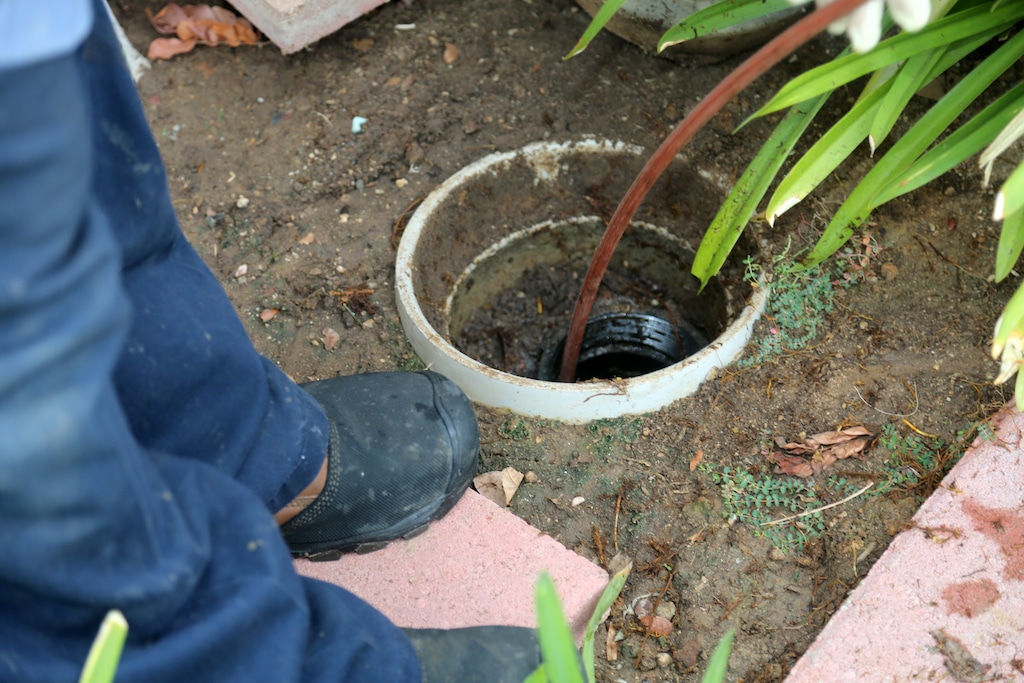
Sewer Line Repair: A Comprehensive Guide
When you’re dealing with a problematic sewer line, it can feel like you’re up against a ticking time bomb under your property.
Whether it’s unexpected backups, foul odors, or water pooling in your yard, these are signs that you might need sewer line repair. You’re not just protecting your home but also ensuring the health and safety of your family.
In this article, we’ll dive deep into what sewer line repair involves and how to identify when you need it. You’ll learn about the different methods professionals use to solve sewer line issues, from traditional repairs to modern trenchless technology.
Plus, we’ll explore preventative measures to keep your sewer line in top condition. Whether you’re a new homeowner or have been in your place for years, this guide will arm you with the knowledge you need to tackle sewer line problems head-on.
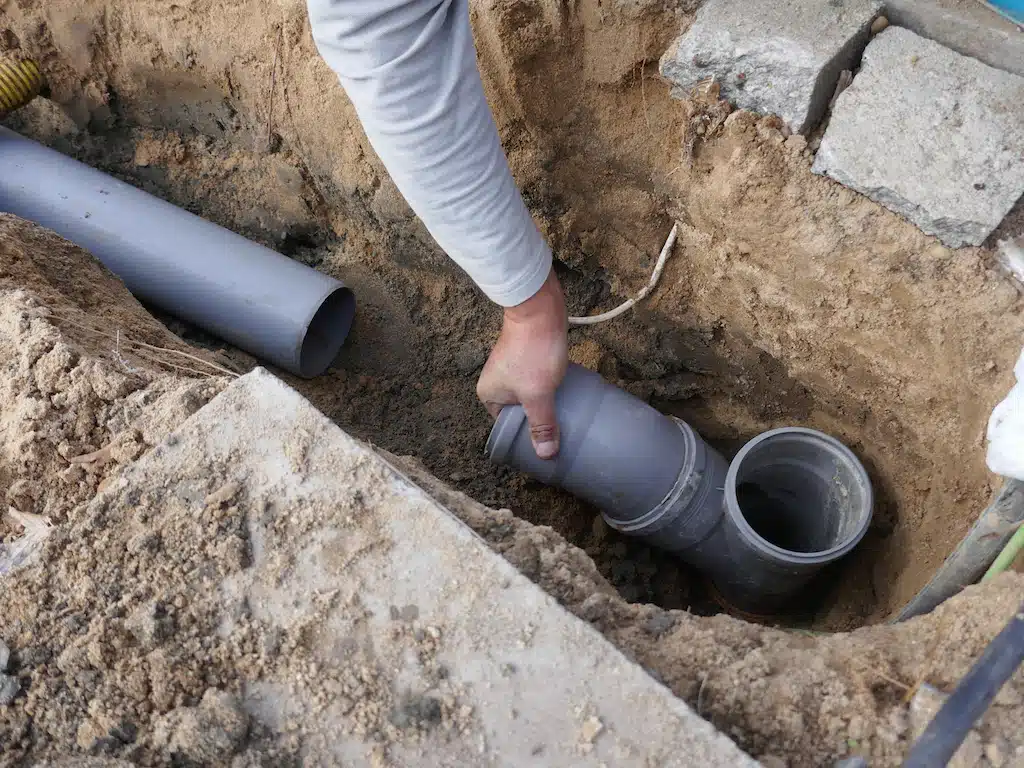
Photo By anela at iStock
A Detailed Explanation of Sewer Line Repair
Sewer line repair involves various methods to address and fix the underlying problems of sewer pipes that can cause significant issues in residential and commercial properties.
These problems can range from simple clogs to complex pipe bursts and require different approaches depending on the severity and location of the damage.
What is Sewer Line Repair?
Sewer line repair is an essential service that addresses issues within the pipes that carry waste away from homes and businesses to municipal sewage systems. This service is critical not only for maintaining the hygiene and functionality of a property but also for protecting the environment from untreated sewage leaks.
The process of sewer line repair may involve several steps depending on the severity and nature of the issue.
Initially, a thorough inspection is conducted often using camera lines to determine the exact location and extent of the damage. This non-invasive technology allows professionals to diagnose the problem without immediate excavation.
Once the problem is identified, repair options can vary. For minor issues such as small leaks or blockages, sewer line cleanup can often resolve the problem. This might involve flushing the lines, using augers, or other blockage-clearing methods.
However, more severe damage may require extensive sewer line repairs or even complete replacement.
Techniques such as trenchless sewer repair, where new lining is installed within the old pipes, minimize yard damage and are becoming increasingly popular due to their efficiency and lower cost.
Repairing a sewer line promptly when issues are detected can save a property owner a significant amount of money and inconvenience. Ignored or undetected issues can worsen, leading to more significant damage that can be much costlier and disruptive to repair.
Moreover, effective repair of sewer lines ensures that the property is safe from the health risks associated with sewage backups, which can introduce harmful bacteria into a home.
sewer line repair is a critical maintenance task that involves diagnosing and fixing problems within sewer pipes.
Whether it’s through preventative sewer line cleanup, timely repairs, or more comprehensive replacements, managing these issues promptly can prevent more severe problems down the line, ensuring that your home remains clean, safe, and well-functioning.
Understanding Common Sewer Line Issues
Tree Root Intrusion and Sewer Line Repair
Tree root intrusion is a common cause that necessitates sewer line repair.
As trees search for moisture, their roots can find their way into the smallest cracks or joints in sewer pipes, especially those that are older or made of more porous materials like clay.
Once inside, these roots can grow and cause significant blockages or even break the pipes, leading to severe sewer system failures.
Sewer line repairs for root intrusion typically involve first clearing the roots from the system, which may require mechanical cutting tools or hydro-jetting techniques. After the roots are removed, it’s essential to repair the damaged sections of the pipe to prevent future intrusions.
Methods such as pipe lining or replacement are commonly used depending on the extent of the damage. Preventative measures, including regular sewer line cleanup and using root inhibitors, can also be employed to manage tree root problems before they necessitate major repairs.
Aging Sewer Pipes and the Need for Repair
Aging pipes are a significant challenge in many older communities where the sewer infrastructure has not been updated for decades. These older sewer lines, often made of materials prone to degradation like cast iron or clay, are susceptible to a range of problems including corrosion, cracks, and eventual collapse.
Sewer line repair for aging pipes often involves either replacing old pipes with new, more durable materials or relining the existing pipes with a sleeve to extend their lifespan.
The relining process, part of a broader category of trenchless sewer line repairs, is less invasive and can usually be completed more quickly than traditional methods.
Regular inspections and maintenance, including sewer line cleanup, are crucial in managing aging pipes, as they can help identify potential problems before they require extensive repairs.
Blockages: A Frequent Culprit in Sewer Repair
Blockages are another prevalent issue leading to sewer line repair.
Common culprits include grease buildup, non-flushable items, and excessive toilet paper usage. These blockages can restrict flow, causing backups and overflows that can damage property and pose health risks.
The initial step in addressing blockages is a thorough sewer line cleanup. This process might involve using augers, plumbers’ snakes, or hydro-jetting, all designed to clear out blockages effectively.
If recurrent blockages are a problem, camera inspections can help identify the underlying causes, such as structural issues with the pipes that require more extensive sewer line repairs.
Ground Movement Impacting Sewer Lines
Ground movement, whether due to seismic activity, nearby construction, or natural soil settlement, can severely impact sewer lines, leading to misalignments or breaks. This type of damage can be particularly challenging to repair and often requires comprehensive sewer line repair strategies.
Repair of sewer lines affected by ground movement might involve stabilizing the soil around the pipes or using flexible pipe materials that can better withstand future movements.
Trenchless sewer line repairs, such as pipe bursting or lining, are effective in these scenarios as they minimize the need for excavation and can adapt more readily to shifts in the ground.
Repair Techniques for Sewer Line Repair
Traditional Sewer Line Repair Methods
Traditional sewer line repair involves significant excavation to expose the sewer pipe that requires attention. This method is typically used when extensive damage to the sewer line has occurred, or when trenchless techniques are not feasible due to the pipe’s condition or location.
The process starts with digging down to the damaged pipe, often disrupting landscaping and requiring more time for both the repair and the subsequent restoration of the affected area.
In traditional sewer line repairs, once the damaged section is exposed, it can be entirely replaced with new piping that meets current standards for durability and performance.
Despite being disruptive, this method allows for a comprehensive repair that can resolve long-term issues such as severe pipe breaks or major root infiltration.
Following the replacement, efforts are made to ensure the surrounding soil is compacted properly, and the surface is restored as close to its original condition as possible.
Regular sewer line cleanup and inspections can often prevent the need for such extensive repairs by identifying and addressing minor issues before they become significant.
However, when traditional repairs are necessary, choosing a reputable service provider who can minimize the disruption and restore the site effectively is crucial.
Trenchless Sewer Line Repair Techniques
Trenchless sewer line repair is a modern, less invasive alternative to traditional repair methods that often requires minimal excavation. This technique is preferable for repairing sewer lines when the goal is to reduce the impact on the surrounding environment, including landscaping, driveways, and other surface structures.
Trenchless repair methods include pipe lining and pipe bursting, both of which can extend the life of an existing sewer system without the need for extensive digging.
Pipe lining involves inserting a resin-coated flexible tube into the damaged pipe, which is then inflated and cured in place to form a new, seamless pipe within the old one. This “pipe within a pipe” method is highly effective for sealing leaks and preventing root intrusion.
Pipe bursting, another trenchless technique, involves breaking the old pipe while simultaneously pulling a new pipe into place. This method is useful for sewer line repairs where the existing pipe is too damaged for relining.
Both trenchless methods not only offer a quicker resolution with less disruption but also ensure that the sewer line repair is durable and resistant to common issues such as cracks, leaks, and future root invasions.
As with all sewer line repairs, regular sewer line cleanup and maintenance can significantly extend the life of the repair and prevent the need for future interventions.
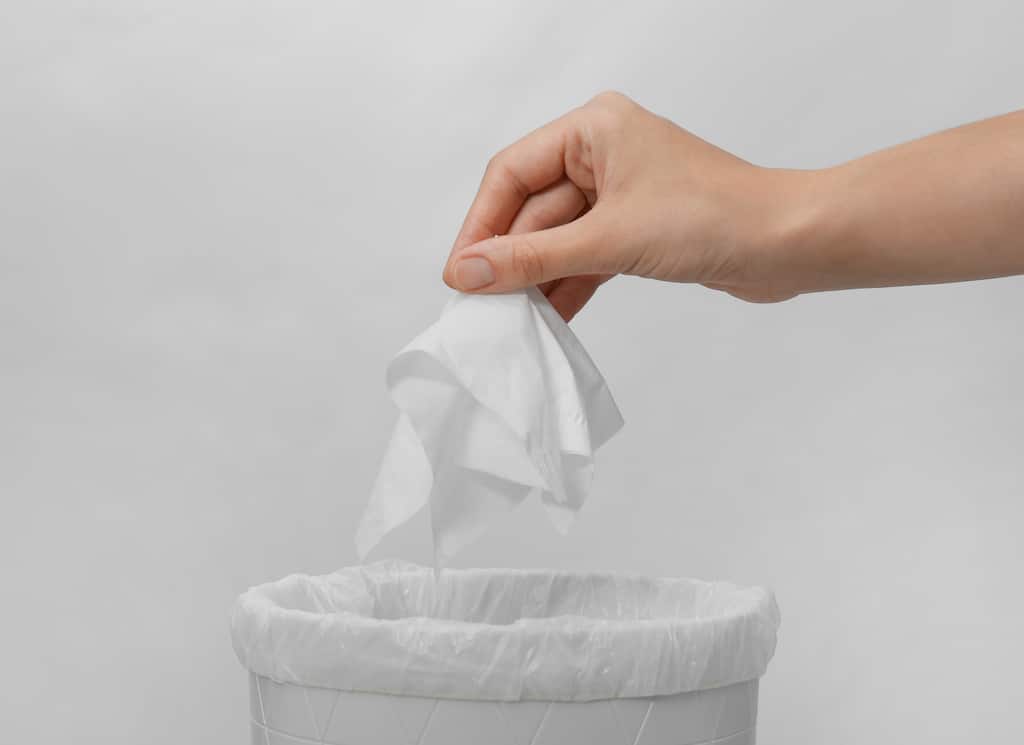
Photo By Liudmila Chernetska at iStock
Preventative Measures for Sewer Line Repair
Regular Inspections and Maintenance
Regular inspections and maintenance are crucial in preventing the need for extensive sewer line repair. Scheduling routine checks with a professional can help detect potential issues early, before they develop into serious problems.
During these inspections, technicians use specialized cameras to navigate through the sewer pipes and identify any signs of damage, blockage, or wear that could lead to future issues.
Sewer line cleanup during these inspections involves removing any buildup of grease, debris, and other obstructions that can accumulate over time. This preventive measure is vital as it helps maintain clear pathways in the pipes, ensuring efficient flow and reducing the likelihood of backups and blockages that necessitate sewer line repairs.
Homeowners are advised to seek professional help for these inspections because they have the tools and expertise to diagnose problems accurately and provide appropriate solutions.
Educating Residents on Proper Disposal Practices
One of the most effective preventive measures to avoid sewer line repair is educating residents on what should and should not go down their drains.
Misuse of the sewage system by flushing non-degradable items such as wet wipes, feminine hygiene products, and excessive kitchen grease can lead to severe blockages that require professional sewer line cleanup and potentially expensive repairs.
Public education campaigns and informative resources can play a significant role in preventing these issues. Homeowners should be aware of the correct disposal methods for various waste products and the impact of their disposal choices on their home’s plumbing system.
By understanding the basics of sewer line maintenance and adopting better disposal habits, residents can significantly reduce the risk of blockages and extend the lifespan of their sewer systems.
Utilizing Sewer Line Shields and Other Protective Devices
To further protect against damage that might necessitate sewer line repairs, homeowners can consider the installation of sewer line shields or other protective devices. These products can help safeguard pipes from external pressures such as root intrusion, shifting soil, or accidental damage during yard work or construction activities nearby.
Investing in these protective solutions can be particularly wise for properties with older sewer systems or those in areas prone to aggressive root growth or frequent ground movement.
While the initial cost may be a factor to consider, the expense is minimal compared to the potential costs of emergency repair sewer line services. These preventative tools provide peace of mind and significantly diminish the likelihood of sewer system failures.
Implementing these preventative measures can significantly reduce the frequency and severity of sewer line repairs. Regular maintenance, responsible disposal practices, and the strategic use of protective devices help maintain the integrity of sewer systems and ensure efficient and trouble-free operation.
Understanding the Costs Associated with Sewer Line Repair
Factors Influencing the Cost of Sewer Line Repair
The cost of sewer line repair can vary significantly based on several key factors. One of the primary determinants is the extent of the damage. Minor issues such as small leaks or clogs may only require simple sewer line cleanup tasks, which are relatively inexpensive.
In contrast, major damage like a collapsed pipe can necessitate complete replacement, which involves more labor, materials, and consequently, higher costs.
Another critical factor is the repair method chosen. Traditional excavation methods tend to be more costly due to the intensive labor involved in digging up the pipe and restoring the area afterward.
On the other hand, trenchless sewer line repairs are generally less disruptive and cheaper because they require less physical labor and do not involve significant landscape restoration.
Regional pricing differences also play a role in the cost. The price for sewer line repair services can vary depending on the local cost of living, availability of plumbing services, and even local regulations that may dictate specific procedures or materials.
Budgeting for Emergency Sewer Line Repairs
When it comes to emergency sewer line repairs, being financially prepared can alleviate a lot of stress. It’s advisable for homeowners to include potential plumbing emergencies in their household budget.
Setting aside a small amount each month can build up a fund that will cover unexpected sewer line repair costs without breaking the bank.
Additionally, homeowners should be aware of the typical signs of sewer line problems, such as unusual odors, slow drainage, or unexpected increases in water bills, which could indicate leaks. Recognizing these signs early can lead to earlier interventions, potentially reducing the cost of repairs.
Exploring Financing Options for Sewer Line Repair
For more extensive sewer line repairs, financing options can be a lifesaver for homeowners who might not have the full amount readily available. Many plumbing services offer financing plans that allow the cost to be spread out over several months or years, making it more manageable.
Homeowners should also check with their local governments as some regions offer special programs or loans aimed at helping to finance essential home repairs, including sewer line repairs.
In some cases, homeowners insurance or home warranty plans may cover part of the cost, particularly if the damage is due to natural causes or accidental events.
Understanding these costs and planning for them can greatly reduce the financial impact of necessary sewer line repairs. Homeowners should consider all available options to ensure that they can handle these expenses in the most economical way possible.
Choosing the Right Professional for Sewer Line Repair
Evaluating Credentials and Experience
When facing the need for sewer line repair, choosing the right professional is critical. It is essential to evaluate the credentials and experience of any potential plumbing service. A qualified plumber should have the necessary licenses and certifications that comply with local and state regulations.
These credentials are not just paperwork; they indicate that the plumber has the requisite training and adherence to industry standards, which is crucial for complex tasks like sewer line repairs.
Experience is another significant factor. Look for a plumbing service that has extensive experience specifically with sewer line repairs and sewer line cleanup.
Experienced professionals are more likely to diagnose the problem accurately and recommend the best course of action. They have likely dealt with a range of issues similar to yours and can draw on this background to efficiently resolve your sewer line problems.
Checking Reviews and References
In today’s digital age, checking reviews and references is another vital step in selecting a professional for sewer line repair. Online customer reviews on platforms like Google, Yelp, and Angie’s List can provide insights into the plumber’s reliability, quality of work, and customer service.
Look for patterns in the reviews. Frequent mentions of professionalism, punctuality, and thoroughness are good signs, whereas repeated complaints about issues like unexplained delays or cost overruns should raise red flags.
Additionally, asking for references and actually contacting them can provide firsthand accounts of the plumber’s work. Previous customers can provide details about their experiences, helping you gauge the reliability and quality of the service provider.
Understanding the Scope of Services
Before hiring a professional for sewer line repair, it’s important to understand the scope of services they offer.
Some plumbing services might only specialize in certain types of sewer line repairs or might not handle certain sewer line cleanup methods. Ensure that the professional you choose offers the specific services your situation requires.
Ask detailed questions about how they plan to diagnose and resolve the issue. For instance, inquire whether they use advanced techniques like camera inspections and trenchless sewer line repairs, which can offer less invasive and more cost-effective solutions.
Also, verify whether they provide a warranty or guarantee on the work performed, which can provide additional peace of mind.
Choosing the right professional for sewer line repair involves careful consideration of their credentials, experience, reputation, and the breadth of services they offer.
By taking these factors into account, you can select a plumber who will provide high-quality, reliable service and ensure that your sewer system is restored to optimal condition efficiently and effectively.
The Impact of Sewer Line Problems on Home Value
Decrease in Property Value Due to Unresolved Sewer Issues
Unresolved issues with sewer lines can significantly diminish the market value of a home.
When a property is known to have ongoing sewer line problems, potential buyers are often wary due to the added risk and potential future expenses they may incur.
Such problems may lead to serious complications like sewage backups in the home or yard, which are not only unpleasant but also pose health risks and require urgent sewer line repairs.
The presence of unresolved sewer line issues can deter buyers or lead them to negotiate lower prices to offset the cost of anticipated repairs. Additionally, homes with frequent sewer line problems may gain a reputation among real estate agents and buyers, which can prolong the time the property spends on the market.
For homeowners, timely sewer line repair and regular sewer line cleanup can prevent these scenarios by ensuring the system is in good working condition.
Enhanced Marketability with Upgraded Sewer Systems
Upgrading the plumbing and sewer systems in a home can significantly enhance its appeal to potential buyers. In today’s market, new or recently upgraded sewer systems are selling points that can be highlighted in property listings to attract more interest.
Buyers appreciate the assurance that they won’t face immediate sewer line repairs and are often willing to pay a premium for homes that have modern, reliable plumbing systems.
Investments in modern sewer line repair technologies, such as trenchless sewer line repairs, not only solve current issues but also improve the overall reliability and efficiency of the plumbing system.
Homeowners who proactively upgrade their sewer lines can effectively use this as a key selling point, potentially increasing the home’s sale price and decreasing the time it spends on the market.
Importance of Timely Sewer Line Repairs
Timely sewer line repairs are crucial not just for the functionality and safety of the home but also for maintaining its value. Delaying necessary repairs can lead to more significant damage, which can be much more costly and disruptive to fix.
Regular inspections and maintenance, including sewer line cleanup, can help identify issues before they become serious, saving homeowners considerable repair costs in the long run.
Homeowners should be vigilant about signs of sewer line issues, such as unusual smells, slow draining, or unexplained lush patches in the yard, which could indicate leaks or blockages. Addressing these signs early with professional sewer line repairs can help maintain the structural integrity of the home and its market value.
Innovations in Sewer Line Repair Technology
Robotic Pipe Repair: Revolutionizing Sewer Line Maintenance
Robotic pipe repair is one of the leading innovations in the field of sewer line repair, transforming how repairs are conducted. This technology utilizes robotic devices that enter sewer lines to perform repairs from the inside without the need for extensive excavation.
These robots can seal cracks, apply patches, and even clean debris with precision, which significantly reduces the disruption to the property and the homeowner’s daily life.
The use of robotics in sewer line repair not only minimizes the physical damage to a homeowner’s yard or driveway but also cuts down on the repair time dramatically. Since there’s less need to dig up large sections of pipe, the overall cost of the repair process is reduced.
Furthermore, robotic sewer line repairs enhance the quality of the repair work, with less room for human error and a more consistent application of repair materials like sealants or liners.
Epoxy Pipe Lining: A Non-Invasive Repair Solution
Epoxy pipe lining is another groundbreaking technology in sewer line repair. This method involves inserting a resin-coated liner into the damaged sewer pipe, which is then inflated to adhere to the interior walls of the existing pipe, effectively creating a new pipe within the old one.
Once set, the epoxy resin hardens, sealing any leaks and preventing future root intrusion and pipe corrosion.
This trenchless sewer line repair technique is less invasive than traditional repair methods, requiring only minimal excavation to access the sewer system. Epoxy lining can extend the lifespan of sewer pipes by several decades, making it a cost-effective and durable solution.
Homeowners benefit from sewer line cleanup and repair that causes minimal disruption to their property and daily activities, while also offering a long-lasting resolution to their sewer line issues.
Impact of Technological Advancements on Sewer Line Repair
The adoption of new technologies like robotic repairs and epoxy linings in sewer line repairs has made the process more efficient and less intrusive.
These advancements save homeowners significant time and money by reducing labor costs, minimizing landscape restoration requirements, and decreasing the overall time spent on repairs.
Additionally, these technologies lead to more durable repairs, which prolong the lifespan of sewer systems and reduce the likelihood of future issues.
These innovative sewer line repair methods are not only about fixing problems but also about improving the approach to how sewer repairs are managed.
By integrating advanced technologies into sewer line repairs and cleanup, professionals can offer better services that ensure homeowner satisfaction and enhanced system reliability.
The Role of Advanced Diagnostics in Effective Sewer Line Repair
Advancements in diagnostic technology have transformed the way professionals approach sewer line repair, allowing for more precise and less invasive methods to be applied.
Utilizing these advanced diagnostic tools not only ensures that the exact problem is identified but also helps in applying the most effective repair techniques, which can significantly enhance the longevity and reliability of sewer systems.
Accurate Identification of Sewer Line Issues
The cornerstone of effective sewer line repair is accurately diagnosing the problem. Advanced diagnostic tools, such as video pipe inspection cameras, are invaluable because they provide a real-time view of the inside of sewer lines.
This allows technicians to visually inspect pipes for cracks, blockages, and other anomalies.
By pinpointing the exact location and nature of the issue, these tools help avoid the guesswork and unnecessary excavation that used to characterize traditional sewer line repairs.
Minimizing Disruption with Targeted Repairs
Thanks to precise diagnostics, repairs can be targeted to exactly where they are needed, which minimizes disruption to the property and daily life. This targeted approach is not only more efficient but also more cost-effective, as it reduces the amount of labor and materials needed.
For instance, if a camera inspection reveals a localized issue, a sewer line repair can be conducted using trenchless techniques such as pipe bursting or lining, which are much less intrusive than replacing an entire section of piping.
Enhancing Preventative Maintenance Strategies
Incorporating regular diagnostic evaluations into a property’s maintenance schedule can greatly reduce the likelihood of emergencies.
By consistently monitoring the condition of sewer lines, potential issues can be identified and addressed before they develop into significant problems requiring extensive sewer line repair. This proactive approach not only saves homeowners significant repair costs but also extends the overall lifespan of the sewer system.
The integration of advanced diagnostics in sewer line repair is essential for modern plumbing practices. These technologies enable professionals to deliver precise, efficient, and less disruptive sewer repair services.
Homeowners benefit from quicker, more affordable repairs that effectively address their plumbing issues while preserving the integrity of their property.
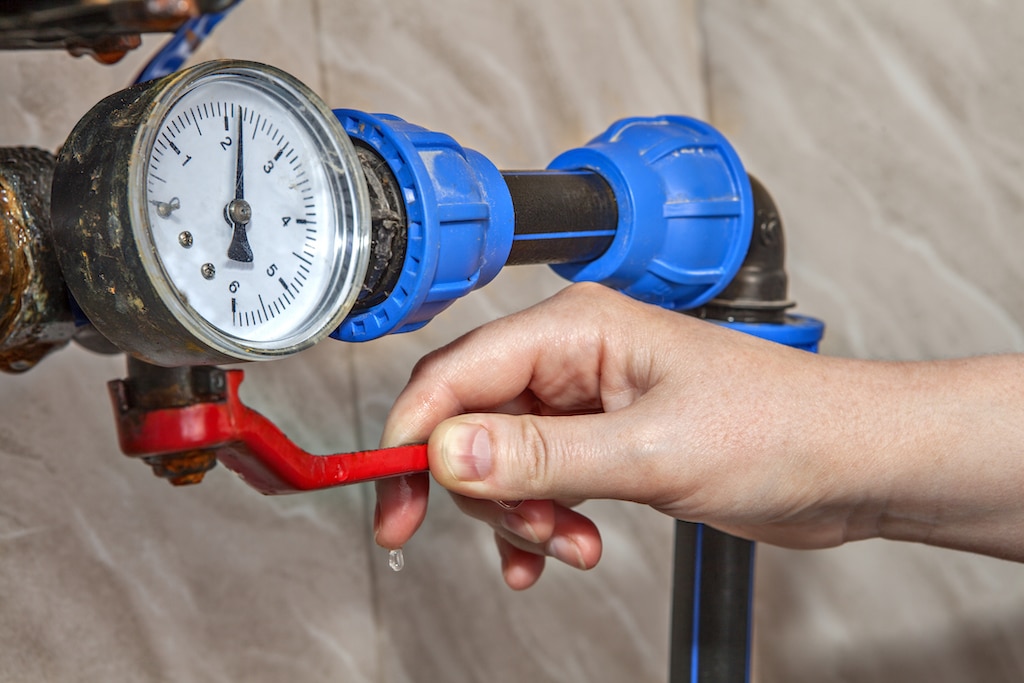
How to Handle Emergency Sewer Line Repairs
Assessing the Situation Quickly
When facing an emergency related to sewer line repair, the first step is to quickly assess the situation to understand the severity and potential risks.
Homeowners should look for signs such as sewage backup in the home, foul odors, gurgling toilets, or soggy patches in the yard, which are clear indicators of a sewer line issue.
Prompt identification can help in communicating the exact problem to a professional, ensuring a quicker response.
During this initial assessment, it’s crucial to determine whether there is an immediate risk to the property or health of the residents. Identifying the source and nature of the problem can also help in applying the correct temporary measures to mitigate damage.
Effective assessment requires some understanding of how sewer systems work, which can be gained from regular sewer line inspections and maintenance.
Implementing Temporary Measures
Once the problem has been assessed, the next step is to implement temporary measures to minimize further damage until professional help arrives.
This might include turning off the main water line if the problem is related to a backup, which can prevent more water from entering the sewer line and exacerbating the issue. Homeowners should also avoid using all plumbing fixtures to reduce water flow to the sewer line.
Temporary measures for a sewer line repair situation are crucial as they can limit the extent of damage and make the cleanup process easier and quicker. However, these are only stop-gap solutions until professional sewer line repairs or sewer line cleanup can be performed.
Contacting Emergency Plumbing Services
The final and most critical step in managing an emergency sewer line repair is to contact emergency plumbing services. It’s advisable to have the contact information of a trusted, local emergency plumber readily available.
When contacting them, provide a clear, concise description of the symptoms and any steps already taken to mitigate the situation.
Professional plumbers specializing in sewer line repairs will have the necessary tools and expertise to handle severe emergencies. They can offer rapid response services and typically arrive with the equipment needed to begin immediate sewer line cleanup and repair.
Choosing a reliable service that offers 24/7 emergency support is essential, as sewer line emergencies can occur at any time and often require immediate attention to prevent extensive damage.
By following these steps—assessing the situation, implementing temporary measures, and contacting emergency plumbing services—homeowners can effectively manage emergency situations related to sewer line repairs.
This proactive approach not only helps in managing the immediate crisis but also in preventing potential long-term damage to the property.
Top 5 Best Practices for Sewer Line Repair
-
Regular Inspections Prevent Major Repairs
Regular inspections by a professional can help prevent major sewer line repairs. Using cameras, a plumber can identify clogs, cracks, and other issues early before they become severe.
This preventative measure saves significant costs and inconvenience by addressing problems while they are still manageable.
-
Early Detection of Sewer Line Issues
Being vigilant about the early signs of sewer line problems, such as slow drains, unusual odors, or unusual lawn wetness, can prevent bigger issues.
Homeowners should not ignore these symptoms as they typically indicate a blockage or damage that could escalate into more severe complications requiring extensive sewer line repair.
-
Choosing the Right Method for Sewer Line Repair
Depending on the condition and layout of your existing pipes, different repair methods like trenchless sewer line repairs or traditional excavation might be advisable. Trenchless methods are less invasive and quicker but not suitable for all types of damage.
Consulting with a professional can help determine the most effective approach.
-
Use of Advanced Technologies in Sewer Line Repair
Leveraging advanced technologies such as epoxy pipe lining or robotic pipe repair can significantly enhance the effectiveness of sewer line repairs. These methods are less disruptive and provide a long-lasting solution to sewer problems, making them a wise choice for modern plumbing solutions.
-
Maintenance After Sewer Line Repair
Post-sewer line repair, it is crucial to maintain the sewer lines to prevent future issues. Regular sewer line cleanup, avoiding the disposal of inappropriate materials down the drains, and possibly changing some habits related to water usage can prolong the life of the repaired sewer lines.
How Bluefrog Plumbing + Drain North Dallas Can Help with Sewer Line Repair
Bluefrog Plumbing + Drain of North Dallas is your go-to expert for all types of sewer line repair.
Whether you’re experiencing an emergency or need routine maintenance, their team of qualified professionals is equipped to handle any sewer line issue.
With their comprehensive service offerings, including the latest in trenchless repair technologies, they ensure minimal disruption and effective repairs.
Check our reviews and ratings on their Google Page, and if you’re in Denton, Irving, Carrollton, or Richardson, TX, don’t hesitate to call us at 469-573-2535 for quick and reliable service.
Final Thoughts
As we’ve explored throughout this article, sewer line repair is a crucial aspect of home maintenance that should not be overlooked.
From understanding the causes and signs of sewer line issues to embracing the latest advancements in repair technologies, homeowners have a myriad of options at their disposal to ensure their sewer systems are in optimal condition.
Regular maintenance, timely repairs, and the use of advanced diagnostic tools are all critical components that can dramatically extend the life of sewer lines, enhance home safety, and preserve property values.
Frequently Asked Questions
- What should I do immediately if I notice signs of sewer line failure?
If you observe signs like unusual odors, slow drainage, or soggy patches in your yard, it is crucial to contact a professional for an inspection as these can be indications of necessary sewer line repair. - How often should sewer lines be inspected to prevent major issues?
To avoid significant sewer line repairs, it is advisable to have your sewer lines inspected at least once every two years, or annually if you have older pipes or have had previous issues. - What are the advantages of trenchless sewer line repair over traditional methods?
Trenchless sewer line repair methods are less invasive, require less digging, and typically can be completed faster than traditional repairs, making them less disruptive and often more cost-effective. - Can tree roots really damage sewer lines, and how can they be dealt with?
Tree roots can invade and severely damage sewer lines. Methods to address this include mechanical root cutting followed by sewer line repairs or preventive measures like root barriers. - What is the typical lifespan of repaired sewer lines?
The lifespan of repaired sewer lines can vary, but properly performed sewer line repairs, especially using modern techniques like epoxy lining, can last several decades.
What steps have you taken for your home’s sewer line repair, and how effective were they? Share your experiences in the comments below!
Read our previous blog post about water faucets.
Check out this tip from our YouTube Channel!
Alan Soukup

